Long March 5B Reentry: Update

On 4 May 2021, I provided a first tentative prediction of the date and time of reentry for the Long March 5B core stage that was launched into a slightly eccentric low Earth orbit on 29 April 2021 and will re-enter the atmosphere within a few days. As later orbit determination data become available, I will update my calculations. The results will appear in this article, which will be updated regularly. The latest update will be at the top, the oldest one at the bottom.
+++ Update for 8 May 12:31:57 UTC
New TLEs for Friday, 8 May 12:31:57 UTC. New predicted re-entry epoch: 9 May 03:27:18 UTC (above the Atlantic Ocean, lon 37.3 W, lat 41.5 N), early: 9 May 01:55:37 UTC, late: 9 May 05:17:12 UTC. Please keep in mind that the given entry location is meaningless in view of the residual uncertainty in the time. The map below shows the ground track from the earliest to the latest re-entry date I obtain here:
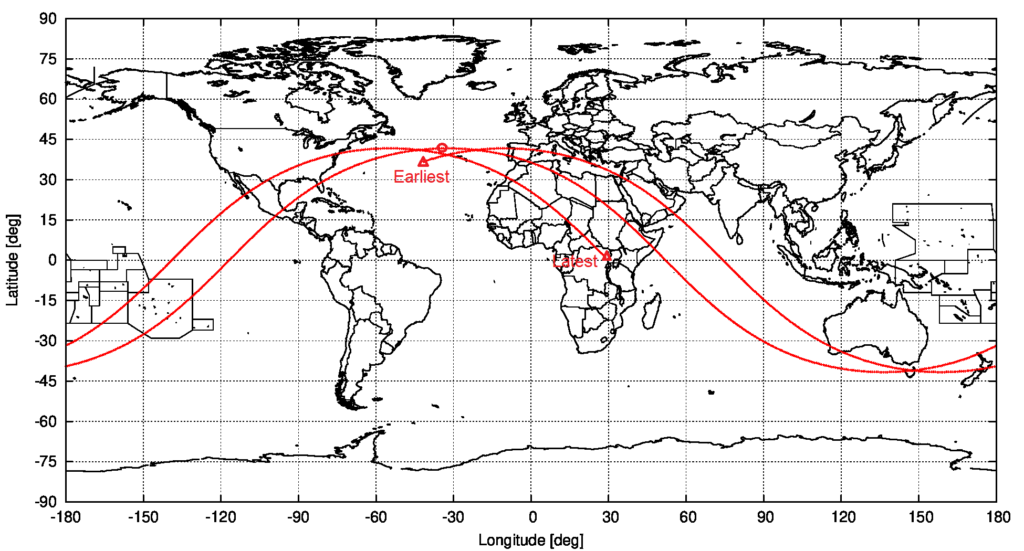
+++ Update for 8 May 09:36:19 UTC
New TLEs for Friday, 8 May 09:36:19 UTC. My calculations jumped back to a much earlier date than for the last prediction. The reason is simple: Apparently, the previous OD called for a slightly higher orbit at the time for which it was computed. With that slight altitude gain, the computed trajectory made it through the equatorial bulge and managed almost one more revolution before hitting the bulge again and then being forced into reentry. The current OD apparently now is more in line with the evolution we had been seeing before, so re-entry is correspondingly earlier
New predicted re-entry epoch: 9 May 03:19:57 UTC (above the Atlantic Ocean, lon 72.2 W, lat 33.4 N), early: 9 May 01:28:14 UTC, late: 9 May 05:30:04 UTC. Please keep in mind that the given entry location is meaningless in view of the residual uncertainty in the time. The map below shows the ground track from the earliest to the latest re-entry date I obtain here:
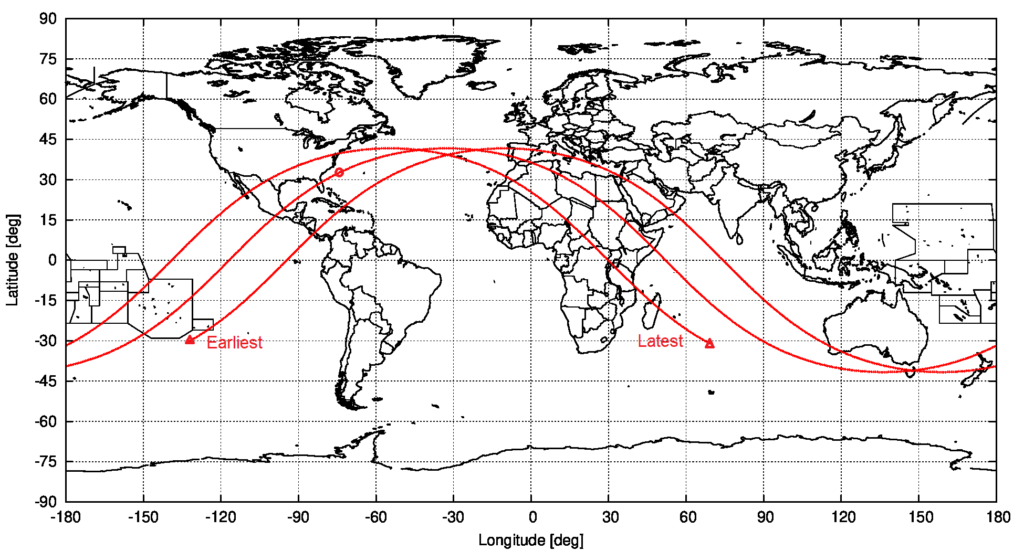
+++ Update for 8 May 04:00:47 UTC
New TLEs for Friday, 8 May 04:00:47 UTC. I missed some new ODs over the night. Now I get a rather strange result, but I checked the input data and assumptions and don’t see anything wrong. So here goes anyway: New predicted re-entry epoch: 9 May 05:14:51 UTC (above central Africa, lon 21.7 E, lat 7.8 N), early: 9 May 2:30:12 UTC, late: 9 May 08:22:42 UTC. Please keep in mind that the given entry location is meaningless in view of the residual uncertainty in the time. The map below shows the ground track from the earliest to the latest re-entry date I obtain here:
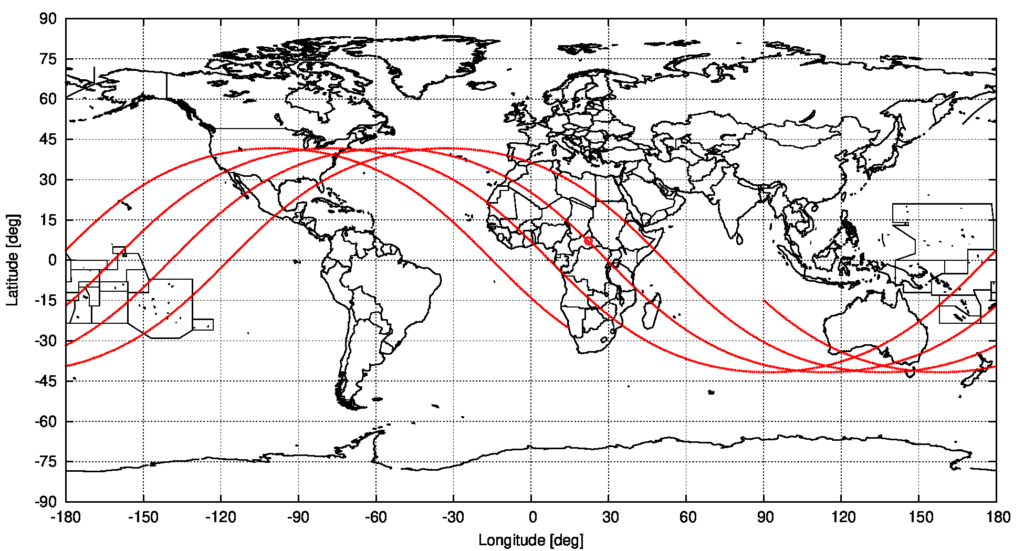
+++ Update for 7 May 08:37:57 UTC
New TLEs for Friday, 7 May 08:37:57 UTC. New predicted re-entry epoch: 9 May 03:53:57 UTC (above Indian Ocean, lon 64.5 E, lat 11.5 S), early: 8 May 22:07:44 UTC, late: 9 May 11:11:36 UTC. Please keep in mind that the given entry location is meaningless in view of the residual uncertainty in the time). For possible locations, please refer to the map below.
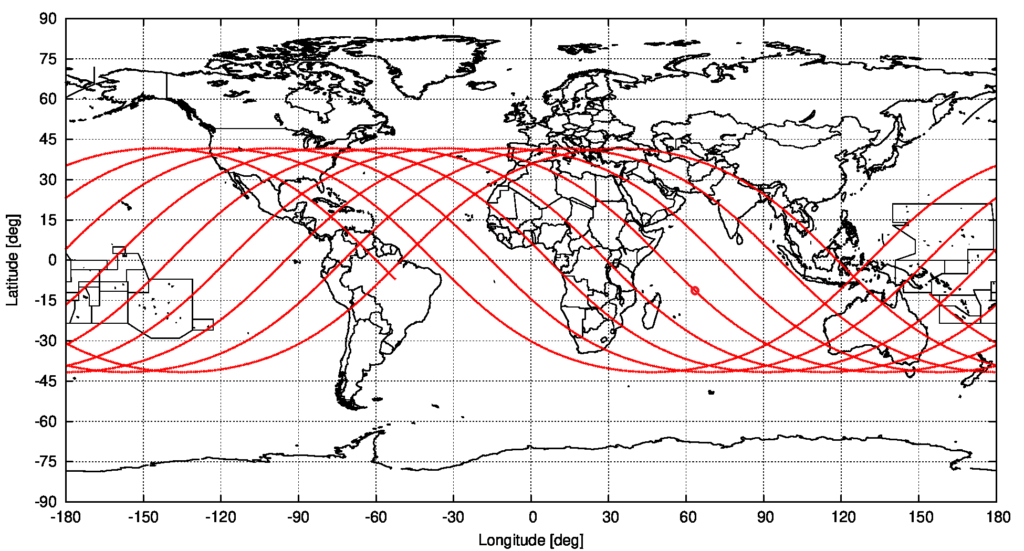
+++ Update for 7 May 04:12:52 UTC
New TLEs for Friday, 7 May 04:12:52 UTC. New predicted re-entry epoch: 9 May 03:45:16 UTC (above East Africa, lon 40.1 E, lat 11.6 N), early: 8 May 21:05:58 UTC, late: 9 May 11:29:08 UTC. Please keep in mind that the given entry location is meaningless in view of the residual uncertainty in the time). For possible locations, please refer to the map below.
+++ Update for 6 May 11:59:10 UTC
New TLEs for Thursday, 6 May 11:59:10 UTC, but I receive and processed them only in the morning of Friday, 7 May.
New predicted re-entry epoch: 9 May 2021 04:21:11 UTC, hardly changed from yesterday’s prediction. At this time, re-entry would happen at longitude 177.2 W, latitude 30.5 S, safely over the South Pacific. However, the uncertainty still is significant. Earliest: 8 May 2021 19:09:19 UTC, latest: 9 May 2021 15:49:57 UTC.
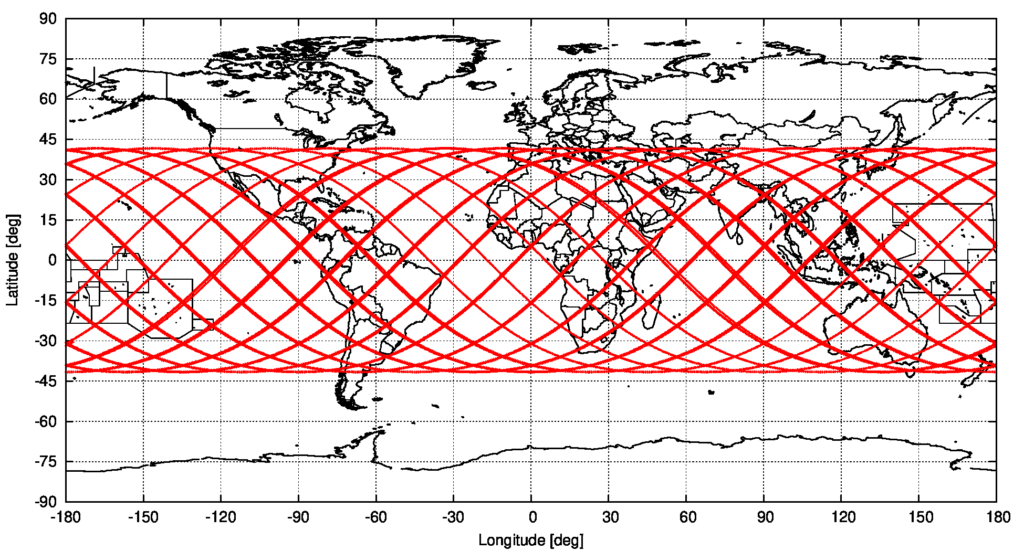
+++ Update for 5 May 13:48:22 UTC
No TLEs have been published so far on Thursday, 6 May, so I use the last set published yesterday, for 13:48:22 UTC. I predict re-entry on 9 May 2021 04:25:11 UTC, (1 hour and 17 minutes earlier than what I predicted yesterday) with the earliest and latest epoch 8 May 2021 08:09:44 UTC and 10 May 2021 06:36:22, UTC respectively. I expect the uncertainty to diminish significantly with the next OD.
I have seen something interesting in the ground track plots. This struck me already two years ago, when I first analysed the decaying orbit of the Long March 5B core stage: the ground track is almost closed and remains that way throughout the remaining lifetime of the stage.
If this is confirmed, it means that the locations where re-entry can happen are quite more constrained that originally met the eye – not anywhere between latitudes of 41.5 deg North and South but actually on much more limited regions, namely only along the red bands on the world map shown below, and not anywhere in between. This would mean that for all the regions that appear white, the probability of the Long March 5B core stage landing there is very much reduced, while for the areas covered with a red band, it should increase.
It would be interesting to see if someone else can confirm this.
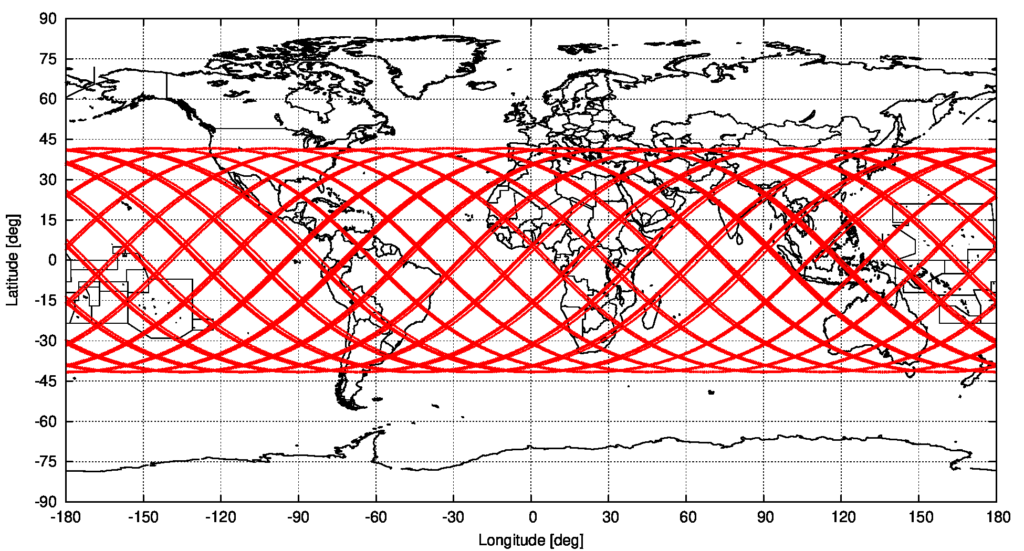
+++ Update for 5 May 04:55:11 UTC
heavens-above.com published an update of the orbit determination results today for the epoch 2021/5/5 04:55:11 UTC. As the orbit is lowering, air drag is getting more of a bite, which allowed me to calibrate the drag model parameters. I then ran a prediction of the obtained re-entry date and also – rather roughly – assessed the effect of the solar activity being lower or higher than the current situation and also the effective cross section being smaller or larger than the average value I had been assuming as baseline.
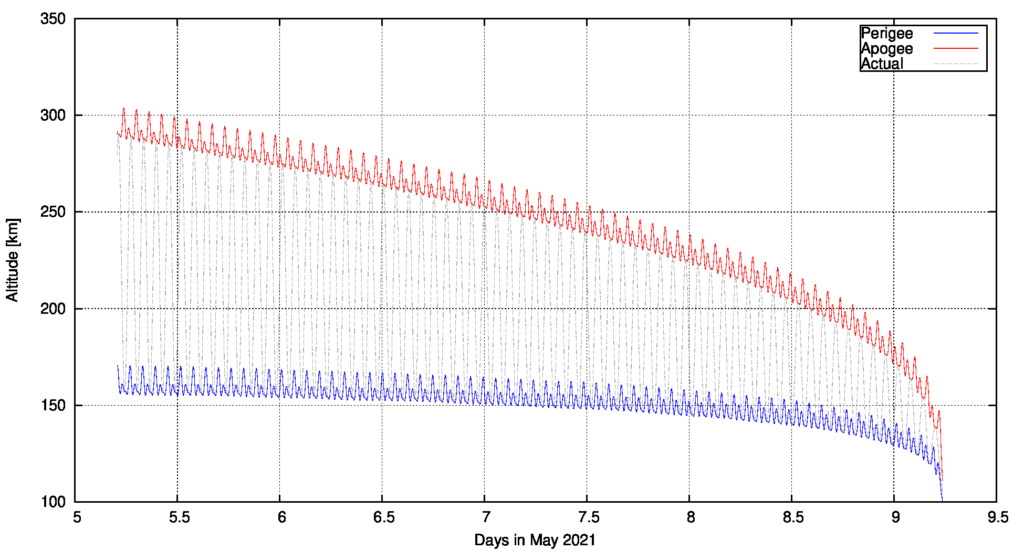
I am showing only the predicted evolution of the altitude. There is no point in redoing the ground track just yet. The re-entry epoch I now obtain is 9 May 2021 05:42:35 UTC, more than 4 hours earlier than what I had obtained yesterday.
The uncertainty is still large; it ranges from 8 May 2021 06:46:45 UTC to 10 May 2021 7:20:25 UTC, but obviously this depends directly on the somewhat arbitrary assumptions I am making for the solar activity and aerodynamic cross section.

